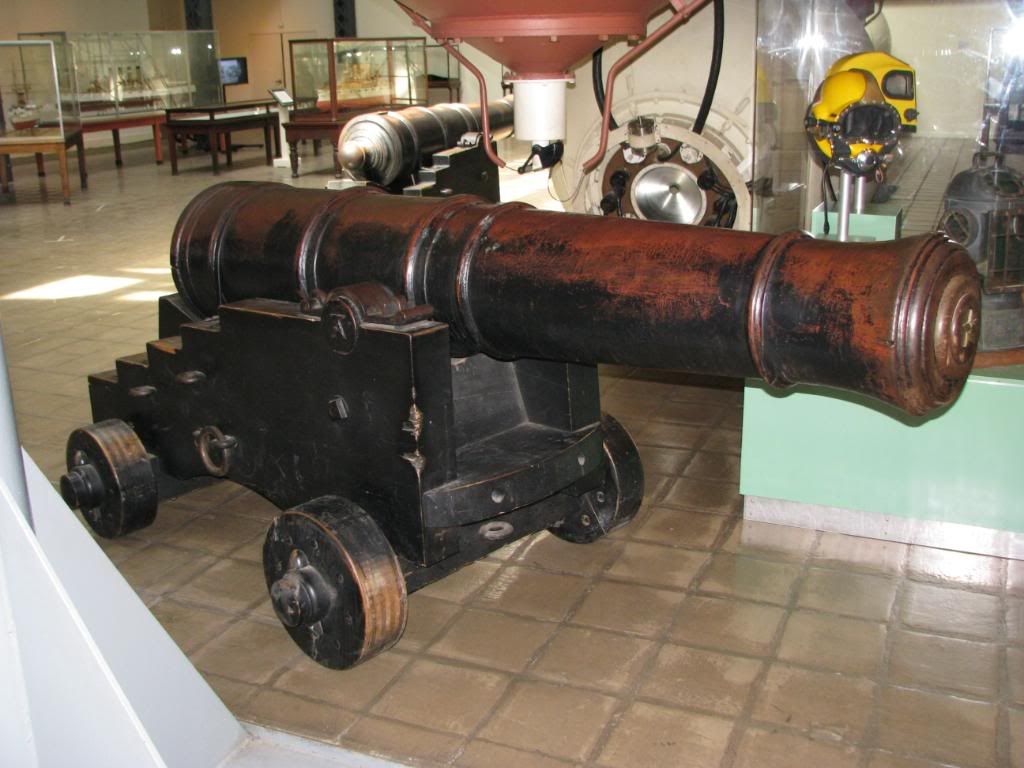Back to the repro cannons as pictured below-
I talked to a representative of the Naval Historical Center today, who said these two cannons came from USS CONSTITUTION. They were reproduced as part of the 1927 restoration of that famous ship. As I suspected the museum inherited them after the ship got a new set of guns during a later restoration.
He said the guns were cast iron and made like the original guns, so they weigh the same as original guns would.
I'm guessing the straps are there to keep curious people from depressing the barrels and possibly getting hands caught etc. I don't know what the preponderance of the guns is but it must be little enough to allow some people to depress the barrels, maybe by sitting on the muzzles.
I think since the cannons were aboard CONSTITUTION for I guess many decades, even though they are reproductions, they are in a sense historic objects. I think they'd be a whole lot more interesting to visitors if a simple sign was posted on them giving the information I got from the Naval Historical Center.
I was sure the guns were iron, but I'm not sure what made me think they were hollow-cast, perhaps because I had heard that many older museum repro cannons were made that way.
